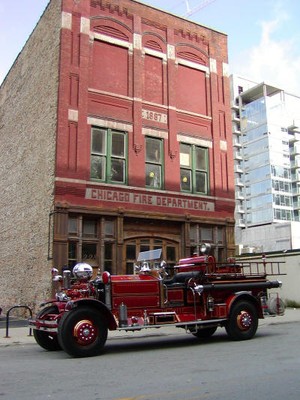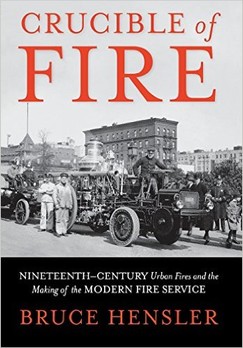Fire Museum of Greater Chicago
Introduction
Text-to-speech Audio
Images
Fire Museum of Greater Chicago

Learn more about the history of early fire departments with this book by Bruce Hensler

Backstory and Context
Text-to-speech Audio
In 1997, fire-history enthusiasts and firefighting veterans established the museum in order to preserve Chicago's long firefighting history, as well "provide an educational forum for succeeding generations to understand how emergency situations were confronted throughout history so they may be better prepared and equipped to meet future emergencies head on."1 From the Great Fire to readiness attached to a city dominated by very tall skyscrapers, the fire servicemen and women of Chicago are part of a rich history.
The Great Chicago Fire of 1871 made it abundantly clear that Chicago could not exist without a dedicated, professional fire service. Moreover, the fire led to an infusion of young architects into Chicago that coincided with immigration and a subsequent population boom. Chicago's architecture grew to influence the world, and the city became one of the biggest in the world.2 However, none of that could have happened without fireman to protect the city and its residents.
Railroads, meat packing, and banking dominated the Chicago economic landscape during the late 19th and early 20th centuries, but there also existed a large increase in cultural centers such as theaters. All of which presented a fire danger. The city and its fire department faced several fires including numerous Stockyard fires, the Iroquois Theater fire, and the Eastland ship disaster.3
The 1920s ushered in the era of automobiles. Chicago and suburban fire departments adapted rapidly. As the twentieth century progressed, so too did the fire department, including relying on "computerized communications, new firefighting technologies and the vast expansion of emergency medical services."3
The two-story museum works to share and preserve that history. The building is located in the former Engine 123 firehouse at 5218 S. Western Ave in Chicago, which served as a firehouse from 1916 until January 17, 1974. The renovation project that began in the late 1990s including removing the kitchen and poles to make way for exhibits, such as old fire trucks. Meanwhile, the Ken Little library is scheduled to reside in the museum's second floor, which is currently being renovated. The library will serve as a research facility as well as house books, photographs, and other unique artifacts.
